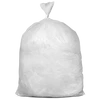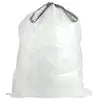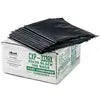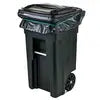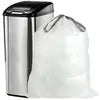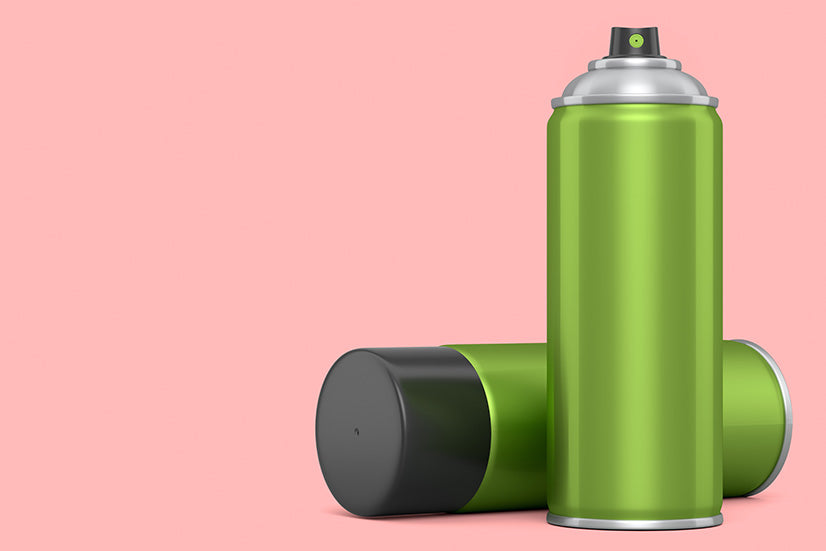Source: Boule/Shutterstock.com
Your 80’s girl Halloween costume was a hit at the party, but now you have a giant can of Aqua Net you’re never going to use again. Or maybe your furniture refinishing hobby is a bust since you’ve discovered prepping the piece is backbreaking work. And now you have half-used cans of Rust-Oleum. Or maybe your war with the mosquitoes in your backyard has left you with several empty cans of bug spray.
Whatever the reason, you’ve found yourself saddled with an arsenal of aerosol cans. And now you’re wondering how to dispose of them. Don’t toss them in your eco-friendly garbage bags just yet. There are some things you need to know about aerosol cans first.
How Do Aerosol Cans Work?
The EPA defines aerosol cans as “an intact container in which gas under pressure is used to aerate and dispense any material through a valve in the form of a spray or foam.”
Five things go into the making of an aerosol can.
- The active ingredient is the product you want to use — spray paint, bug spray or whipped cream. The solvent is the substance that controls the active ingredient’s consistency. Thanks to the solvent, cheese in a spray can isn’t runny, and the air freshener comes out as a fine mist.
- The propellant (you guessed it) propels the active ingredient from the can. In food products, manufacturers use carbon dioxide or nitrous oxide as a propellant. Years ago, aerosol cans contained ozone-depleting materials. Today, aerosol cans containing nonfood products use hydrocarbons, which are better for the ozone, but highly flammable.
- The active ingredient and its accompanying chemicals are pressurized in a steel or aluminum can.
- Finally, the valve assembly is the mechanism that the end user uses to propel the can’s ingredients. The valve assembly consists of gaskets, springs and tubes inside the can as well as the button on the top.
Buy Your Simplehuman Garbage Bags Here

Source: Boule/Shutterstock.com
Are Aerosol Cans Dangerous Hazardous Waste?
All five elements of an aerosol can combine to create several potentially dangerous situations.
The highly pressurized nature of aerosol cans make them vulnerable to exploding under certain conditions. Heat can make an aerosol can dangerous, even if the can looks undamaged. For example, any aerosol left in a hot car can explode when you try to use it.
Aerosol cans are made of metal precisely to avoid damage that might cause the can to explode. If the aerosol can is damaged or punctured, the pressurized material inside could cause the can to explode. Metal shards can injure you, or the contents of the can may go in your eyes.
The chemicals inside aerosol cans may be dangerous for the environment.
Despite these safety concerns, aerosol cans are generally not regulated as hazardous waste. That doesn’t mean you should just toss a half-full can of spray paint in the garbage.
Because aerosol cans may explode under the wrong circumstances, they pose a risk to sanitation workers. Additionally, the contents of the can could leak and cause environmental damage.
Reduce & Reuse Aerosol Cans
Use the three Rs of waste when deciding how to manage your use and disposal of aerosol cans.
Reduce Your Use of Aerosol Cans
Because of the potentially dangerous nature of aerosol cans, always opt to purchase products packaged in safer material. Many cleaners come in pump spray bottles. And bug spray and sunblock also come in lotions or pump sprays.
Looks for Ways to Use Non-Empty Aerosol Cans
Donate non-empty aerosol cans. There may be a school or charity in need of the items in aerosol cans you no longer need. Schools will often make good use of spray paint for projects. Check with local nonprofits to see if they could use your unused cleaning products.

Source: Boule/Shutterstock.com
Can You Recycle Aerosol Cans?
Even though aerosol cans are recyclable, many areas still do not accept them in their recycling program. This is because these facilities need special equipment to depressurize aerosol cans to make them safe for handling, processing and transporting.
The only way to know if you can recycle aerosol cans is by calling your local recycling center. If you can recycle aerosol cans, always ensure they are empty and do not remove the plastic spray cap.
How to Dispose of Aerosol Cans
When you can’t opt for a non-aerosol option, or you’re unable to donate your unused product in an aerosol can, follow these disposal instructions.
Empty Aerosol Cans
Your empty, non-recyclable aerosol cans can go in the garbage. Even if the can contains hazardous material, such as pesticides or oil-based paint, it’s okay to place it in the trash if it’s empty.
Non-Empty Aerosol Cans
Never put non-empty aerosol cans in the garbage. Doing so creates a dangerous safety issue for sanitation workers. Instead, call your waste management facility for disposal instructions. Or save your non-empty aerosol cans for hazardous waste collections in your area.
Always try to avoid using aerosol cans in the first place. But if you can’t find a non-aerosol option, always dispose of cans properly. Knowing when to dispose of aerosol cans in eco-friendly garbage bags keeps sanitation workers safe.












